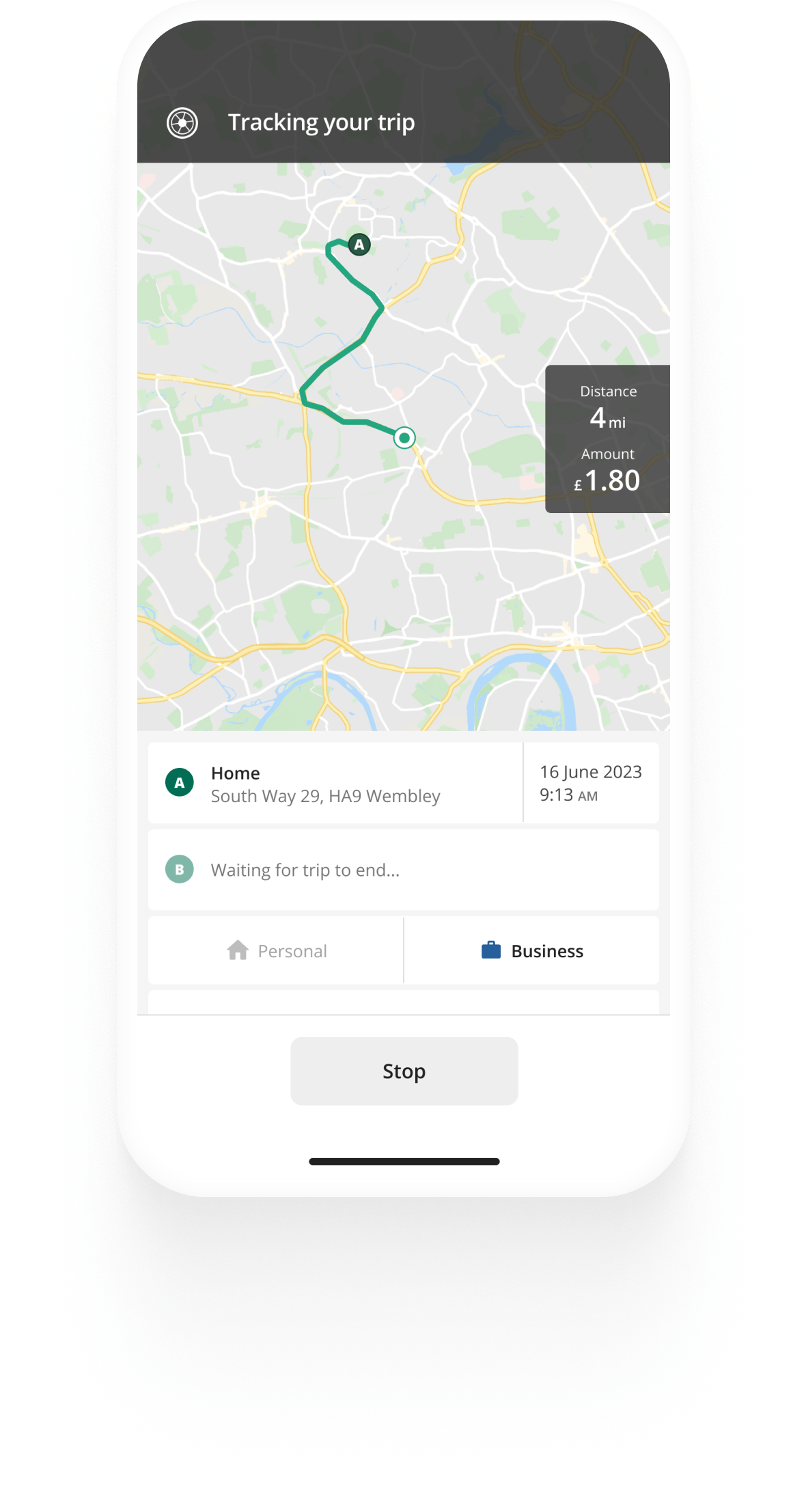Track mileage automatically
Get startedMileage Allowance Relief
Mileage Allowance Relief (MAR) is a tax deduction for employees that have incurred business mileage and are not fully reimbursed by their employer. Keep in mind that different rules apply if you use a company car.
Are you self-employed? See our dedicated guide to claiming mileage for self-employed individuals.
What is Mileage Allowance Relief (MAR)?
When you use your personal vehicle for business purposes, many employers will reimburse you per mile with Mileage Allowance Payments (MAP). HMRC provides advisory mileage allowance rates that your employer can use - the rate for the 2025/2026 tax year is set at 45p for the first 10,000 miles.


Mileage tracking made easy
Trusted by millions of drivers
Automate your mileage log Automate your mileage log

Automatic mileage tracking and HMRC-compliant reporting.
Get started for free Get started for freeCalculating your mileage allowance
Let's go through a quick example of how to calculate mileage reimbursement at the advisory rate:
In one year you drive 5000 miles for work purposes and your employer uses HMRC’s advisory rate. To calculate your reimbursement, you simply follow the below:
[miles] x [rate]
5,000 x 0.45 = 2250 GBP
However, do keep in mind that following HMRC’s advisory rate is a suggestion to your employer and not a requirement. If you don’t receive mileage allowance, you are entitled to claim MAR on all your work-related driving at the advisory mileage rates.
Never miss a trip. With the Driversnote mileage tracking app you have the tool to ensure every business-related mile you drive is properly logged and categorised.
Claiming mileage tax relief from HMRC
If you receive Mileage Allowance Payments from your employer, your ability to claim tax relief will be based on your individual circumstances, as per the below:
- If your employer fully reimburses you with the approved amount of mileage allowance for the year, you have nothing to claim and are not eligible for MAR.
- If you are paid more than the approved amount of MAP, any sum you have received on top of the advisory rate for your business mileage will be taxed through PAYE. You have nothing to claim and are not eligible for MAR.
- If your employer reimburses you under the approved amount of mileage allowance, you are entitled to claim tax relief for the tax year on the “unused” amount of the mileage allowance.
- If you are not paid a mileage allowance at all, you are entitled to claim MAR on all your work miles at the advisory mileage rates.
- If you earn less than the personal tax allowance, and therefore do not pay tax, you will not qualify for tax relief.
Additionally, If you use a company car and your employer does not reimburse you with the full Advisory Fuel Rates (AFR) you can claim MAR on your fuel costs for business trips. For more on this specifically, you can check out HMRC’s website.
How much mileage you can claim
The mileage allowance relief claim is based on HMRC’s approved mileage rates. The 2025/26 HMRC rates are:
- 45p for cars and vans for the first 10,000 miles. After 10,000 miles, the rate changes to 25p per mile.
- 24p for motorcycles regardless of miles driven.
- 20p for bicycles regardless of miles driven.
You can only receive MAR for the amount not covered by your employer. For example:
You have driven 4500 miles for work this year with your car and your employer has reimbursed you with 30p per mile.
[miles] x [rate]
4,500 x 0.30 = £1,350.00 GBP you have received in mileage allowance.
In this case, you are entitled to claim MAR for the additional 15p per business mile driven.
4,500 x 0.15 = £675.00 GBP in mileage allowance relief.
If you haven't received any allowance payments from your employer, use our calculator to work out your mileage allowance relief.
Input your business mileage below
How to claim Mileage Allowance Relief on Self Assessment
You can claim mileage tax relief at the end of the tax year from HMRC. To qualify here’s what you need to do:
- Keep accurate records of your business mileage.
- Add up your business mileage for the whole year.
- Add up the mileage allowance payments you have received throughout the year.
- Subtract the received MAP from the approved amount you should have received.
If you usually do not need to complete a tax return, you can use form P87 on HMRC’s website to claim MAR. If your total expenses claim is more than £2,500, you will need to use your Self Assessment tax return.
Records you need to keep for your mileage allowance relief
In order to claim Mileage Allowance Relief, you will need to keep records of your business trips throughout the year. For your records to be sufficient for an HMRC mileage claim you need:
- The date of the trips
- The start and end address of each trip, including postcodes
- The distance travelled
- The total amount of mileage allowance you have received from your employer.
You can supply the same records to your employer and HMRC as long as they include the details listed above.
It’s up to you to decide if you would rather keep analogue or digital records, but there are several phone applications, including Driversnote, that create clear, tax compliant records automatically - saving you quite a bit of time in the process.
FAQ

Tired of logging mileage by hand?
Effortless. HMRC-compliant. Liberating.
HMRC Mileage Guide
- For self-employed
- For employees
- HMRC mileage claim in 5 steps
- Self-employed mileage allowance records
- Car allowance for employees
- Salary sacrifice car scheme
- Mileage Allowance Relief
- HMRC mileage rate 2022
- HMRC mileage rates 2021